#萱野茂
Photo

読んだ本 8月前半 ひとり暮らし 谷川 俊太郎 新潮社 完本アイヌの碑 萱野 茂 朝日文庫 英語の読み方 北村 一真 中公新書 伝わる英語表現法 長部 三郎 岩波新書 二十億光年の孤独(谷川 俊太郎)は 一応 最初から最後まで読んだ けど 詩の本はどれも とりあえず開いて 開いたそのページの詩を読む 時々音読(小声) ことが多く 読了かつ進行形で読んでる本扱い (※写真撮り忘れ) 伝わる英語表現法 は 英語に限らず 母語での意思伝達で参考にできる 英語の読み方 は snsでフォローしている海外アーティストの投稿に これで反応しやすくなるかな snsで言葉が省略され/進化し 誤解を生まないよう発信し 意図を正しく理解するコツを 2冊からは学ぶ あと2冊は勉強以外 元々は「ゴールデンカムイ」関連で読み始めた本 言語と文化を守った人の自伝 と 子供の頃から馴染みのある詩人の随筆 で 若い時の尖り具合 年々研ぎ澄まされていくというか 削ぎ落とされて残る部分というか 元気なお爺さんのお話2冊となった #読書 #読了 #読み終わった本 #ひとり暮らし #谷川俊太郎 #完本アイヌの碑 #萱野茂 #英語の読み方 #北村一真 #伝わる英語表現法 #長部三郎 #8月前半の振り返り #積読消化 ※ハッシュタグのため敬称略 https://www.instagram.com/p/ChedWuFPki7/?igshid=NGJjMDIxMWI=
0 notes
Text
三篇 下 その三
上方者は、
「ハァ、ソンナラお前のお馴染みは何屋じゃいな」
と、意地悪く問うと、
「アイ、大木屋さ」
と、弥次郎兵衛がいう。
「大木屋の誰じやいな」
と、上方者がさらに問うと、
「留之助よ」
弥次郎兵衛が答えた。
上方者が
「ハハハ、そりゃ松輪屋じゃわいな。
大木屋にそんな女郎はありもせぬもの。
コリャお前、とんとやくたいじゃ、やくたいじゃ」
(やくたい…上方言葉で、らちもない、とんでもない、よくない、など広い意味に使う)
弥次郎兵衛は、
「ハテ、あそこにもありやすよ。ナァ北八」
(大木屋は実在の大見世の扇屋のこと。松輪屋はやはり実在の松葉屋のこと。留之助は松葉屋の抱えの名妓の染之助のこと。したがってこのやり取りでは上方男の勝ち)
北八、面倒臭くなってきて、
「ええ、さっきから黙って聞いていりゃ、弥次さんおめえ聞いたふうだぜ。
女郎買いに行ったこともなくて、人の話を聞きかじって出放題ばっかり。
外聞のわるい。国者の面よごしだ」
弥次郎兵衛は、
「べらぼうめ、俺だって行くってんだ。
しかもソレ、お前を神に連れていったじゃァねえか」
(神…取り巻き、太鼓持ち。遊廓付きの本職ではなく、客が連れ込んだ遊びの取り巻き仲間。落語の野太鼓がこれである)
北八、思い出して、
「ああ、あの大家さんの葬式の時か。なんと、神に連れたとは、おおげさな。
なるほど二朱の女郎の揚げ代はおめえにおぶさったかわり、
馬道の酒屋で、浅蜊のむきみのぬたと豆腐のおから汁で飲んだ時の銭は、みんなおいらが払ったじゃねえか」
(葬式くずれで繰り込むなら安い店にきまっている。揚げ代二朱なら宿場の飯盛なみのごく安い女郎。馬道は吉原に通ずる町。そこの酒屋のぬたも汁もごく安い庶民的な食い物である)
弥次郎兵衛は、
「嘘をつくぜ」
北八も、
「嘘なもんか。しかもその時おめえ、さんまの骨をのどへ立てて、飯を五六杯、丸呑みにしたじゃねえか」
「馬鹿言え。お前が田町で、甘酒を食らって、口を火傷したこた言わずに」
「ええ、それよりか、おめえ土手で、いい紙入れが落ちていると、犬の糞をつかんだじゃねえか、恥さらしな」
(土手…吉原に入る途中の山谷堀に添った日本堤の土手八丁、金持ちなら土手八丁を四ツ手駕で飛ばし、貧乏人なら歩く、いずれも弥次郎の自慢が嘘だと、北八が暴露したかたち)
と、遣り合っている二人に、上方者が
「ハハハハハ、いや、お前方は、とんとやくたいな衆じゃわいな」
弥次郎兵衛が、
「ええ、やくたいでも、悪態でも、うっちゃっておきゃァがれ。
よくつべこべとしゃべる野郎だ」
上方者は、関わり合いにならない方がいいかと、
「ハァこりゃご免なさい。ドレお先へまいろう」
と、そうそうに挨拶して、足早に行ってしまう。
その後ろ姿をみながら、弥次郎兵衛は、
「いまいましい。うぬらに一番へこまされた。ハハハハハ」
この話の間に、三ケ野橋を渡り、大久保の坂を越えて、早くも見付の宿(磐田市)にいたる。
北八、
「アァくたびれた。馬にでも乗ろうか」
ちょうどそこへ、馬方が、
「お前っち、馬ァいらしゃいませぬか。
わしどもは助郷役に出た馬だんで、早く帰りたい。
安く行かずい。サァ乗らっしゃりまし」
(助郷…東海道の交通の確保のために、沿線の村々に幕府がかけた役務で、人馬の徴発を含めて重いものだった)
弥次郎兵衛は、
「北八乗らねえか」
と、問い掛けると、
「安くば乗るべい」
と、馬の相談が出来て、北八はここから馬に乗る。
この馬方は助郷に出た百姓なので、商売人の馬子でないから丁寧で慇懃である。
弥次郎兵衛は、
「そうだ、馬子どん。ここに天竜川の渡しへの近道があるんじゃねえかな」
と、思い出して、聞いてみると、
「アイ、そっから北の方へ上がらっしゃると、一里ばかしも近くおざるわ」
と、馬方がいう。
北八が、
「馬は通らぬか」
と、更にとうと、
「インネ、徒歩道でおざるよ」
と、ここから弥次郎は一人近道のほうにまがる。
北八は馬で本道を行くと、早くも加茂川橋を渡り、西坂の墳松の立場に着く。
茶屋女が声をかけてくる。
「お休みなさりやァし、お休みなさりやァし」
茶屋の婆も声をかけてくる。
「名物の饅頭買わしゃりまし」
馬方が、その婆様に声を掛ける。
「婆さん、おかしな日和でおざる」
「お早うございやした。いま新田の兄いが、一緒に行こうかと待っていたに。
コレコレ横須賀の伯母どんに、言いついでおくんなさい。
道楽寺さまに勧説法があるから、遊びながらおいでと言ってよう」
(道楽寺は遊びながらおいでにこじつけた架空の寺の名)
馬方は、
「アイアイ、また近うちに来るように伝えときましょう。ドウドウ」
と、いうと、また歩き出した。
「この馬は静かな馬だ」
北八は、珍しく乗りやすい馬なので、つい、そういうと、
「女馬でおざるわ」
と、馬方が、こたえる。
北八は、にんまりして、
「どうりで乗り心地がよい」
馬方が、問い掛けてきた。
「旦那は、お江戸��どこだなのし」
「江戸は日本橋の本町」
と、北が答える。
「はあ、えいとこだァ。わしらも若い時分、お殿様について行きおったが。
その本町というところは、なんでもえらく大きい商人ばかしいるところだァのし」
と、昔のことを思い出しながら、話してくる。
「オオそれよ。おいらが家も、家内七八十人ばかりの暮らしだ」
と、またまた、くちからでまかせ。
馬方もしんじているにのかいないのか、
「ソリャ御大層な。お神さまが飯を炊くも、たいていのこんではない。
アノお江戸は、米がいくらしおります」
「まあ、一升二合、よい所で一合ぐらいよ」
と、考えながら言うと、
「で、そりゃいくらに」
と、馬方は、よく分からない。
「知れたことよ、百にさ」
と、北八がいうと、
「はあ、本町の旦那が、米を百文づつ買わしゃるそうだ」
馬方は勘違いして、そういう。
北八、笑いながら、
「ナニとんだことを。車で買い込むは」
「そんだら両にはいくらします」
と、馬方。
「なに、一両にか。ああ、こうと、二一天作の八だから、二五の十、二八の十六でふみつけられて、四五の廿で帯解かぬと見れば、無間の鐘の三斗八升七合五勺ばかりもしようか」
(割り算の九九の二一天作の八は一二天作の五の間違い、途中から浄瑠璃の文句でごまかしている。米の値段も出でたらめ)
と、何やら、難しそうな、計算をはじめる。
「はあ、なんだかお江戸の米屋は難しい。わしにゃァわからない」
馬方は、すっかりけむに負かれて、
「わからぬはずだ。おれにもわからねえ。ハハハハハ」
と、北八も自分でいっててわからなくなった。
この話のうちにほどなく天竜川にいたる。
この川は信州の諏訪の湖水から流れ出て、東の瀬を大天竜、西の瀬を小天竜と言う。
舟渡しの大河である。弥次郎は近道を歩いてここで北八を待ちうけ、ともにこの渡しを越えるとて、一首。
水上は 雲よりい出て 鱗ほど 浪の逆巻く 天竜の川
(水、雲、鱗、浪、逆巻く、みな竜の縁語の竜づくしが趣向)
舟からあがって立場の町にいたる。
ここは江戸へ六十里、京都へも六十里で、東海道の振り分けになるから中の町(浜松市)というそうだ。
傾城の 道中ならで 草鞋がけ 茶屋に途絶えぬ 中の町客
(ここを江戸吉原の中の町に見立てて、花魁道中の高足駄の代わりに草鞋、吉原の引き手茶屋と街道筋の茶屋、どちらも客が絶えぬと言う趣向)
それより萱場、薬師新田を過ぎて、鳥居松が近くなったころ、浜松宿の宿引きが出迎えて、
「もし、あなたがたァお泊りなら、お宿をお願い申します」
と、二人の呼びかける。
北八がそれに答えて、
「女のいいのがあるなら泊りやしょう」
客引きここぞとばかりに、
「ずいぶんおざります」
と、いうと、弥次郎兵衛が、
「泊まるから飯も食わせるか」
宿引き
「あげませいで」
北八、
「コレ菜は何を食わせる」
宿引き、
「ハイ当所の名物、自然藷でもあげましょう」
「それがお平の椀か。そればかりじゃあるめえ」
「 それに推茸、慈姑のようなものをあしらいまして」
「汁が豆腐に蒟蒻の白和えか」
と、北八が、客引きとやりあっている。
弥次郎兵衛が、
「まあ、軽くしておくがいい。その代わり百ケ日には、ちと張り込まっせえ」
(ここのやり取りは、宿引きの言うのが、野菜ばかり並べた精進料理なので、死人の法要の料理だと皮肉ったのである。法要では、当初と百ケ日には料理を張り込むのがしきたり)
「これは異なことをおっしゃる。ハハハハハハ。時にもうまいりました」
「オヤもう浜松か。思いのほか早く来たわえ」
と、弥次郎兵衛、ここで一首読む。
さっさっと 歩むにつれて 旅ごろも 吹きつけられし 浜松の風
(松風の音の颯、颯と、さっさと歩くとにかけている。風に吹き送られて早く着いた意味も含む)
その横を宿ひきが駆け抜ける。
宿引きは、旅館に駆け込むと、
「サァサァお着きだよ」
と、置くに声をかける。
「お早くございました。ソレおさん、お茶とお湯だァよ」
それに、こたえて、この旅館に亭主が出てくる。
弥次郎兵衛が、
「イャそんなに足はよごれもせぬ」
と、いうと、亭主
「そんなら、すぐにお風呂にお召しなさいまし」
と、奥に案内しようとする。
つづく。
0 notes
Photo
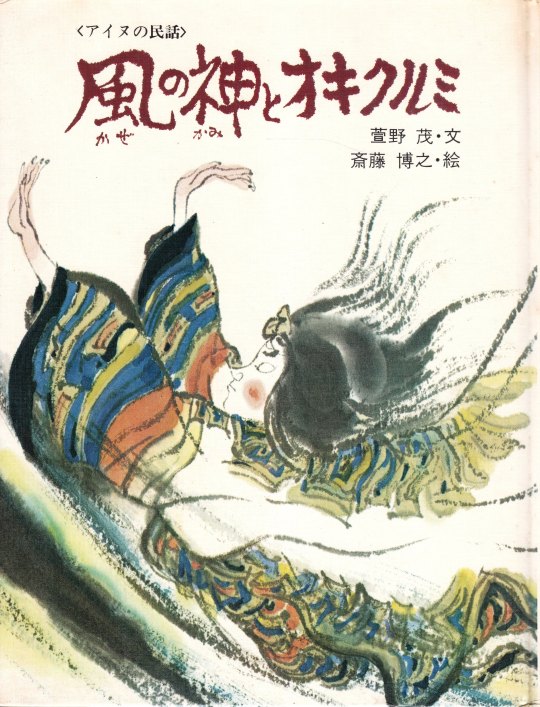
風の神とオキクルミ〈アイヌの民話〉
民話のえほん・2
萱野茂・文、斎藤博之・絵
小峰書店
20 notes
·
View notes
Link
Ancestral Ainu Remains Returned by Tokyo University
by Noah Oskow
A long fight by Japan's indigenous Ainu results in a hard-won victory - but much more remains to be done.
Resting Once Again Amongst Their People
On August 22nd, a Kamuinomi – an Ainu ceremony meant to celebrate the return of spirts to the realm of the gods – was held in Urahoro, in eastern Hokkaido. The sacrament’s purpose was that of welcoming back six sets of indigenous remains, taken long ago by Japanese researchers based out of the famed Tokyo University. The researchers first removed the Ainu remains from their gravesites in 1889, in the early Meiji Era; later, others returned in 1965, in the post-war era, for more.
The group receiving the ancestral remains was the Raporo Ainu Nation, the local Urahoro indigenous organization. For them, it was a day of quiet celebration – the culmination of a series of victories in their quest to reclaim stolen Ainu remains.
Raporo Ainu Nation had previously brought court cases against Hokkaido and Sapporo Medical Universities, both of which housed innumerable Ainu skeletons; all have now been returned to their homelands. Tokyo University, despite earlier protestations, was now also acquiescing to similar demands.
Six wooden boxes were laid out in front of a large freshly dug grave. Besides the waiting earth sat the Ainu delegation, bedecked in traditional clothing. They chanted in the Ainu tongue – one unrelated to the Japanese language which otherwise surrounded them. (Unlike the languages of the native Ryukuans, Ainu is not a Japonic language.) Libations of sake were offered to the kamuy, the spirits. Then, the remains were finally reinterred in the land from which they had so long ago been taken.
The Abduction of their Ancestors
The impetus for the veritable grave plundering of Ainu bones was ostensibly scientific: the desire by Japanese researchers to learn more about the physical and, later, genetic make-up of the indigenous ethnic minorities native to Japan’s northern borders. Indeed, at the time of the first unearthing, Hokkaido (and the native Ainu people along with them) had only recently been fully incorporated into Japan.
Previous to the Meiji Restoration in 1868, Hokkaido wasn’t even “Hokkaido;” rather, it was Ezo, a frontier borderland peopled by those the Japanese considered “barbarians.” A relatively small Japanese settler colony ruled by the Matsumae clan existed on the southern tip of Oshima Penninsula, which regulated trade with the Ainu and oversaw Japanese financial control of the island.
Sadly, this led to the entire field of Ainu Studies being essentially founded on grave robbery.
Previous to Japanese encroachment and eventual control, the Ainu people lived in villages scattered across Ezo, Sakhalin Island, and the Kurils. While they had a hunter-gatherer lifestyle that appeared uncivilized to the Japanese, Ainu society was in fact more complex than most interlopers perceived.
Beyond their advanced hunting and fishing techniques, the Ainu were also part of a diverse and expansive trade network that stretched from Hokkaido in the south, to Kamchatka in the far north. Ainu traders rode in dugout canoes to the Asian mainland, where they traded with the indigenous peoples of the Amur river basin. Sakhalin Ainu even made war with the Mongol-controlled Yuan dynasty of China, and later engaged in tributary trading with the Ming and Yuan dynasties.
High-quality silk brocades given to Ainu chieftains by the Chinese became prized goods for trade with encroaching Japanese from the south. It was access to these Chinese goods and Ainu-hunted pelts, furs, painted Sakhalin beads, and live falcons that made Japanese samurai desirous towards control of Ainu trade. Japanese trading pressure; exploitative and often coerced use of Ainu labor in Japanese fisheries; the ravages of newly introduced diseases; all these brought irreparable damage to the Ainu environment and society.
The Myth of a Naturally Doomed People
In 1889, in the midst of Japan’s headlong rush towards modernity, the Japanese government passed the Hokkaido Former Aborigines Protection Act. The Ainu were now officially considered Japanese. In practice, this meant they were subject to forced cultural assimilation that further disrupted their society and lead, ironically, to mass discrimination.
The Ainu’s were now a periphery people scheduled to be made “Japanese,” their “aboriginal” status to be forgotten as quickly as possible. In light of the notion that the Ainu were now a “disappearing tribe,” Japanese researchers became intent on taking as many artifacts of the Ainu’s material culture as possible before the earth swallowed them up. This is part of what resulted in the initial untombing of the Ainu remains just recently returned by Tokyo University.
In these inaugural years of the field of ‘Ainu Studies” (アイヌ学), previously held ideas about Ainu “barbarians” were melded with the emerging scientific field of evolution, leading Japanese researchers to make various claims about Ainu inferiority to “more evolved” Japanese society. Researchers, although often empathetic towards the plight of the impoverished Ainu, believed the only way to “save” the object of their research was to assimilate them out of existence. As Ainu ties to their craft traditions waned and the people themselves were assumed to be on the brink of annihilation, researchers felt the need to collect and document as much as possible.
A Dark Legacy for Ainu Studies
The Hokkaido Museum of Northern Peoples (Hoppo Minzoku Hakubutsukan) exhibits about the culture of Ainu native people and other northern peoples of the world.
Sadly, this led to the entire field of Ainu Studies being essentially founded on grave robbery. In both 1864 and 1865, mere years before the fall of the Tokugawa dynasty, the British consul in Hakodate led a group of foreigners interested in uncovering the mystery of the Ainu’s “Caucasian” features to secretly raid Ainu gravesites. When the story broke, it became a major scandal (even resulting in the firing of the consul).
Yet subsequent Japanese researchers continued to seek out Ainu bones for well over a century. Sometimes this was done with the understanding of local Ainu. (As often happened with Ainu crafts, money was possibly exchanged). Other times, however, researchers hoping to learn more about this “disappearing tribe” engaged in acts that very much resembled the previous British consul’s.
Ancestors Unearthed
Most infamous of the grave robbers was Hokkaido University Professor Kodama Sakuzaemon, who lead various state-sanctioned raids into local boneyards throughout the 1920s to 1970s – all against Ainu protests. Sometimes police were called in to help hold off Ainu from physically preventing the unearthing of their ancestors. As is recalled in the book Beyond Ainu Studies, a 1930’s bone-collecting expedition resulted in…
…the entire village police force [being] enlisted to assist Kodama’s team and when three or four elderwomen threw their bodies over their ancestors’ grave sites they were unceremoniously removed by attending officers.
The end result of decades of university researchers stealing thousands of ancestral remains was an Ainu populace who often distrusted and felt anger towards those Japanese academics and scientists who, ostensibly, wanted to understand the Ainu. Especially egregious to the Ainu was the fact that, within their tradition, bodies are to buried whole in order to maintain a tie to the spirit.
Painful Memories
Our land, Ainu Mosir, had been invaded, our language stripped, our ancestral remains robbed, the blood of living Ainu taken, and even our few remaining utensils carried away. At this rate, what would happen to the Ainu people?
For Kayano Shigeru (萱野 茂, 1926 – 2006), the first Ainu in Japanese parliament and a major voice for indigenous rights, the spiriting away of Ainu skeletons and artifacts by mainland researchers was a source of much shame. In his famous memoir, Our Land Was A Forest, Kayano recalled returning home to find treasured artifacts missing; his impoverished father had sold them away to researchers.
In those days I despised scholars of Ainu culture from the bottom of my heart. They used to visit my father for his extensive knowledge of the Ainu. I often railed at them and, accusing them of behavior as rude as that of waking a sleeping child, ordered them never to return. Professor K. [likely Kodama] of Hokkaido University was one at whom I snarled many times… They dug up our sacred tombs and carried away ancestral bones. Under the pretext of research, they took blood from villagers and, in order to examine how hairy we were, rolled up our sleeves, then lowered our collars to check our backs…
It was this same anger and desire to recover the Ainu culture that lead Kayano to become such a major voice in the question for indigenous rights in Japan.
Seeing such self-centered conduct by shamo [Japanese] scholars, I asked myself whether matters should be left as they were: Our land, Ainu Mosir, had been invaded, our language stripped, our ancestral remains robbed, the blood of living Ainu taken, and even our few remaining utensils carried away. At this rate, what would happen to the Ainu people? What would happen to Ainu culture? From that moment on, I vowed to take them back.
The Fight to Reclaim the Ancestors
It was with the same spirit of cultural recovery that Ainu groups from around Hokkaido have set out to gain the return of their ancestor’s remains. In 2008, after centuries of denial and erasure, the Japanese government suddenly announced that the Ainu were to be legally considered the indigenous people of the north. Although by this point there remained only around 25,000 self-declared Ainu with only a few elderly native speakers still living, this signaled a huge victory for Ainu rights. In 2013, the Ainu council of Kineusu used their new indigenous status as a basis for suing Hokkaido University for the return of uninterred Ainu bones.
More lawsuits followed. Slowly, the ancestral remains and funerary artifacts sitting in collections and in storage across universities in Japan began to be returned. Hokkaido University, home to more Ainu remains than any other facility in Japan, played a major role in these skeletal repatriations. In July, Hokkaido opened the Symbolic Space for Ethnic Harmony – a “national center for the revival and development of Ainu culture.” The center is to host the National Ainu Museum and National Ainu Park. Importantly, it also has a space to carefully store Ainu remains. Still, the Symbolic Space itself has become controversial with Ainu, with some hoping for the return of remains more directly to Ainu communities.
The Way Forward
The return of the ancestral remains by Tokyo University on Saturday comes amidst an interesting time for the Ainu community. Recognition of the Ainu and their culture is one the rise worldwide, they finally have recognition by the Japanese government, and cultural revival movements are gaining steam. Young Ainu are engaged in reconnecting with their heritage, learning their language, and sharing their culture with others. Hokkaido schools will soon have textbooks that make multiple references to Ainu history. The field of Ainu Studies has evolved, now placing more primacy on the perceptions of the Ainu themselves and welcoming more Ainu scholars.
Yet still, Ainu face discrimination and erasure. A national survey from only four years ago revealed that a huge 74% of Japanese people had never been exposed to Ainu culture or people. The now-delayed 2020 Tokyo Olympics suddenly axed an Ainu ceremony planned for the opening ceremonies. Progress is being made, but it’s not always enough.
Yet, on Saturday, as the burial of six sets of remains in Urahoro marked the complete return of a total of 103 such Ainu once held at Tokyo University, Raporo Ainu Nation honorary president Masaki Sashima found himself becoming emotional.
この瞬間を迎えられて感無量です。遺骨には『今まで待たせて申し訳ありませんでした。静かに眠ってください』とお祈りしました。I’m overcome with feeling having reached this moment. I prayed to the remains of the deceased, saying, “I’m greatly sorry for having made you wait so long. Please rest in peace.”
The earth of the Ainu Moshir, the Ainu homeland, once again embraced the ancestral remains, welcoming them home.
Sources
(08月22日). 東大返還アイヌの人の遺骨を埋葬. NHK News Web.
Kayano, S. (1994). Our Land Was A Forest : An Ainu Memoir. Routledge.
Hudson, M.J., Lewallen, A., & Watson, M.K. (2014). Beyond Ainu Studies: Changing Academic and Public Perspectives. Honolulu: University of Hawai’i Press.
Walker, B. (2001). The Conquest of Ainu Lands: Ecology and Culture in Japanese Expansion,1590-1800. University of California Press.
Kimura, K. (2015, July 25). Japan’s indigenous Ainu sue to bring their ancestors’ bones back home. The Japan Times.
#Ainu#Ainu Moshiri#Ancestors#Hokkaido#Tokyo#Tokyo University#Japan#colonialism#colonial violence#genocide#grave robbing#racism#institutional racism
377 notes
·
View notes
Text
Your Voice Touches My String playlist for October 6th, 2021
1. Early Steps / Sainkho Namtchylak
2. Scat / Phew
3. Inonnoitaku Apehekote イノンノイタクアペヘコテ (Prayer for the god of fire) / Shigeru Kayano 萱野茂
4. Kamuy-Yukar / Yoshi Shikato
5. Lullaby / Tatyana Sat
6. Love Song / Mungo Martin
7. Bungbung Mangmang (Magindanaon lullaby) / Unknown
8. En écorçant les cocos (Husking coconuts) / Harold Tomson
9. Jibarayek Jirlap Kitsen Cin Rap (Let Us Sing and Let It Ring) / Laszlo Vikar
10. Unknown song in Ethiopian Style / Uncredited singer
11. Alundé dodo basé / Loje kiki dai / Dibiti ovajiran / Dodo pisé titi (medley) / Uncredited singer
12. Wiegenlied / Decha
13. Feet Live Their Own Life / Langston Hughes
14. Smoked Like Lightning / Horace Sprott

1 note
·
View note
Photo
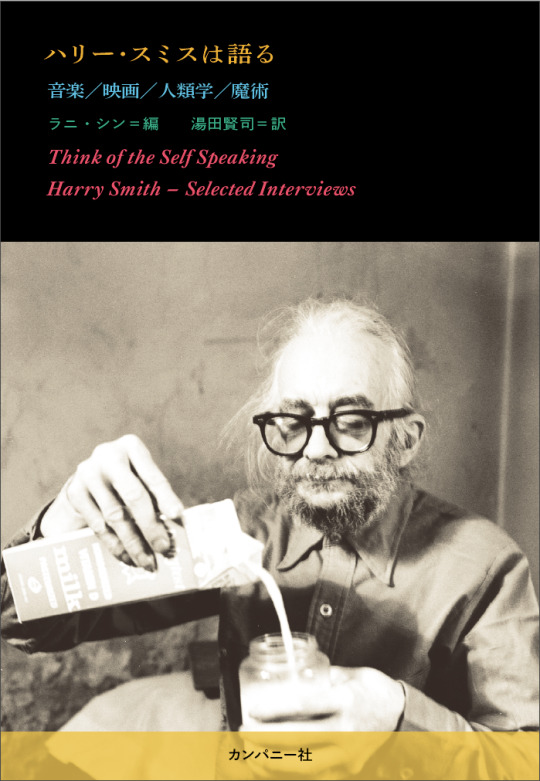
2020年4月18日
【新入荷・新本】
ラニ・シン編『ハリー・スミスは語る 音楽/映画/人類学/魔術』(カンパニー社、2020年)
価格:2,800円(+税)
/
訳者:湯田賢司(ゆだ・けんじ)
1965年東京に生まれ仙台に育つ。筑波大学で外国人のための日本語教育と言語学(音声学)を学んだ後、詩人アレン・ギンズバーグが共同設立したコロラド州ボウルダー市のナローパ・インスティテュート(現ナローパ・ユニバーシティ)の文芸創作・文学学科を卒業。1995年から翻訳業に携わり、ワイアード・ニュース、萱野茂『Ainu Tools』(共訳、ゆいでく、2014年)、『ボブ・ディラン インタビュー大全』(DU BOOKS、2019年)などを手掛ける。
/
推薦コメント
「神と乞食、天才と狂人、導師とジャンキー……ハリー・スミスは、エクストリームに対立しあう記号の表裏を溶かし、秩序と混沌の融合を自ら体現してしまった全身錬金術師だ!!! 宇宙の矛盾を一人で引き受けたかのような氏の残した言葉達は、惑星にこびり付いた茶渋の如く、今世紀も人類を翻弄する!!! “芸術”とは心の変容、そのプロセスが生み出す寓意だ、と……。全音楽家、全映像作家、全美術家、必読の経典、降臨!!!」
宇川直宏(DOMMUNE主宰/現“在”美術家)
「人類学者フランツ・ボアズの門下生とともに北米先住民文化の研究を進め、アメリカ西海岸の前衛映画運動にかかわり、『アンソロジー・オブ・アメリカン・フォーク・ミュージック』(1952)を編纂してボブ・ディランなどフォークリバイバル運動のインスピレーションとなる――アメリカ文化思想史上、決定的に重要な知の巨人/奇才のインタビュー集の翻訳刊行を心より祝福します。快挙!」
大和田俊之(アメリカ文化研究)
「世の中には、文化人類学者になりそこねて作家や芸術家になってしまった者たちがいる。ヴォネガット、バロウズ、ゴダール、岡本太郎がそうで、ハリー・スミスもそのひとりだが、ハリーが何になったのか、いまだにわからない。ただ彼が人類学者になりそこねたことを感謝するだけだ。そうでなかったら、事実と空想と科学と詩と音楽がごちゃまぜになった、こんな面白い話はきけなかったはずだ。」
小田マサノリ(文化人類学者/現代美術家)
「我々が持っているルーツ・ミュージックの概念は、ロックンロール以前の1950年代初頭にハリー・スミスが編纂した『アンソロジー・オヴ・アメリカン・フォーク・ミュージック』から生まれたと言ってもいいほどです。このインタヴュー集を読むと彼の博学ぶりに驚くと同時に、天才にありがちな「紙一重」的な脱線力(?)に感心します。話について行こうとするのは無駄、その行間からふんだんに蒔かれている種を拾うだけで十分だと思います。」
ピーター・バラカン(ブロードキャスター)
http://companysha.com/
1 note
·
View note
Photo

読み始めた本 アイヌの碑 萱野 茂 朝日文庫 漫画「ゴールデンカムイ」関連読書 継続中 #読書 #読み始めた本 #アイヌの碑 #萱野茂 #朝日文庫 #ゴールデンカムイの影響 https://www.instagram.com/p/Cewy8uVvq-M/?igshid=NGJjMDIxMWI=
0 notes
Text
Roads for pilgrims and the god 伊勢神宮 あるけあるけ 02
(日本語&English)
→ 目次ページへジャンプ/jump to contents page
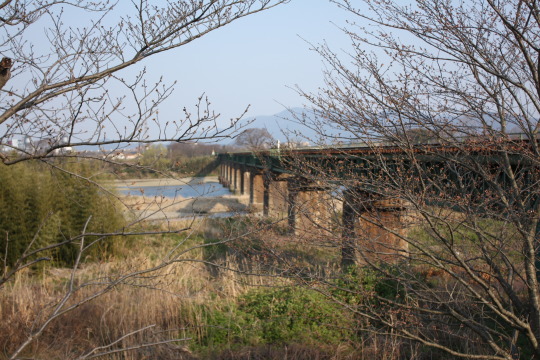
photo: MIYAGAWA river and railroad bridge, and 萱KAYA

photo: 萱KAYA near my house
We arrived at west riverside of Miyagawa river. It is a relatively big river with broad dry riverbed. As most of japanese rivers do, this river has many weed called Kaya萱 in its dry riverbed. kaya is a weed having a great vital power, having firm roots, and it becomes very tall. (Please take a look at the photo above. That is Kaya near my house KappaTei ). Even today we suffer from this weed when we make paddy field or garden.
宮川の渡しに到着。川辺には、日本の河川の例にもれず萱が茂っています。この草は高く伸びるわ、根は頑丈だわで、太古から今に至るまで、農作業には大敵の存在です。抜いても切ってもまた生えてくるその生命力に手こずった経験のある方は多いでしょう。
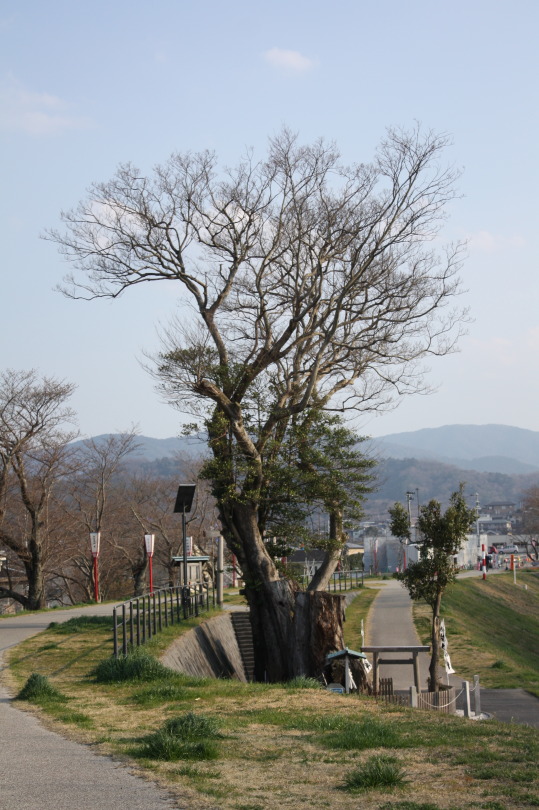
photo: A huge tree by MIYAGAWA river. Kaya field and huge trees are ordinary scenery in ancient Japan
When you travel Japan by Shinkansen you can see vast paddy fields. But please imagine the age of myth, the age of our ancestor's arrival to Japanese islands. Most of plains must have been covered with this weed. Huge effort must have been needed to fight against it and to make paddy fields. That experience made our ancestor think out one Kamisama named KAYANOHIME NO MIKOTO. She is a goddess of all the weeds and grasses. One of my friend pointed that this goddess has the possibility to be not only the god of weed but god of irrigation.As I was inspired his opinion, I planned this trip.
はるか昔、私たち日本人の祖先がこの列島にやってきたときには、おそらく平野部のすべてはこの草に覆われていたはずです。それを、新幹線の車窓から見てもわかるような延々と続く田んぼに作り替えていったのは、祖先の努力の賜物といえます。
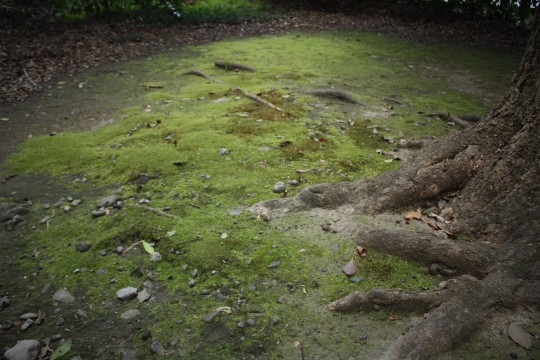
Photo: In the grounds of 清野井庭神社KIYONOIBA JINJYA shrine
My wife and I lost the way of pilgrims because today's civilization has changed the scenery of this area. But on the other hand the civilization offers us a bridge. We went across the Miyagawa river on it on foot. We were going to visit several shrines, especially 清野井庭神社KIYONOIBA JINJYA shrine. There KAYANOHIME NO MIKOTO is enshrined.
さて、宮川の渡しとは言え、今の世の中に渡し舟が残っているわけではありません。普通に橋を渡り、宮川の東岸を目指します。そこにあるいくつかの神社、別けても清野井庭神社が目的地です。ここには萱が神格化されたカヤノヒメノミコトが祀られています。
37 notes
·
View notes
Photo

【古き良きもの】 今日は僕の愛するアイヌをご紹介します! 皆さんはどの柄がお好きですか? ちなみに、めくった【アタリ】は昔、自分で書きました。 まだまだ世の中にはアイヌの魅力は埋まっております。 春なのでキンカムイ(熊)と共に目覚めさせてあげたいものですね笑 さて、 先日お伝えしました、アイヌ文化を求めて道内名刺配りの旅の件ですがだいたいスケジュールが、決まりました。 ご協力下さった皆さん、何より一番最初にお声掛け下さった方には感謝の気持ちでいっぱいです😇 まず始めの一人目としまして お声掛け下さった、エゾナアイヌさん@ezona_ainu_arranged とお会いして頂ける事となりました! 待ち合わせは、なんと! 【minapa】#ミナパ 札幌地下鉄駅のアイヌ文化発信空間 ミナパ=大勢で笑う {フクロウの前🦉!!} 渋谷ハチ公前でも、池フクロウでもなく ミナパのフクロウの前笑笑 エゾナアイヌさんのページに飛んでもらうとわかりますが、 「美しい、カッコいい→興味が湧いた→好き→北海道行ってみたい!」 そんな繋がりの、はじめのひと雫になりたい💧💧 なんて素敵なコンセプトなんでしょう!! そんな素敵な方とお会い出来る事に心より感謝しております。 一人だと心細いとの事なので←(お気持ちわかります。。笑) 是非、どなたか他にもお茶でもしばきながら🍵一緒にお話し致しませんか? 【一人よりも二人、二人でも大勢みんなで、ミナパ!笑いませんか?】 お待ちしております^ ^ 13日は小樽へ行き、仕事の打ち合わせが終わった後、小樽にあるアンティーク 七福さんにお邪魔させて頂きます! アイヌ文様の小樽焼を以前から見たくて楽しみです😇 その日の夜は、新札幌へ行き、アイヌ伝統歌の歌姫でおなじみの、豊川容子さんの生歌ライブを聴きに行きます。 14日は、いざアイヌの聖地二風谷へ、途中、アイヌ刺繍のデザインの研究ため、各所博物館などに立ち寄り その後、アイヌ民族初の国会議員で有名な、伝説の萱野茂さん。 そのお孫さんが経営されている、二風谷ゲストハウス ヤントさんのところに一泊させて頂きます。 15日は、勿論朝から平取町二風谷アイヌ博物館まみれ笑 そして、帯広へ向かいます。 名刺配りの旅が、いつしか、アイヌまみれの旅となりました笑 是非、途中、どなたかお時間ある方がいらっしゃいましたら、ご一緒にお茶🍵でもどうでしょうか? 宜しくお願い致します^ ^ 一人でも多くの人たちと繋がれますように そして、ミナパ(大勢で笑う) イランカラプテ〜!! アイヌ語で、こんにちは。 あなたの心にそっと触れさせて下さいね😇 北神威 https://www.instagram.com/p/BwCIg3Ngi2F/?igshid=raajgx528qu
1 note
·
View note
Photo
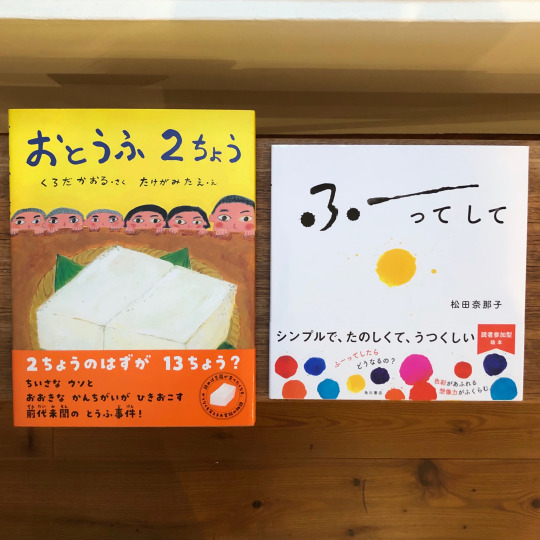

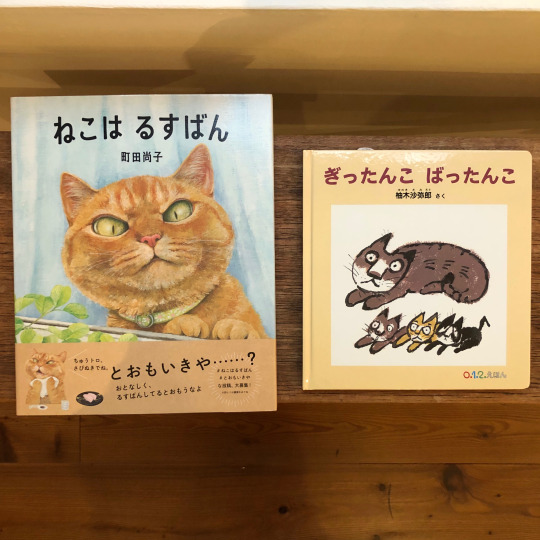


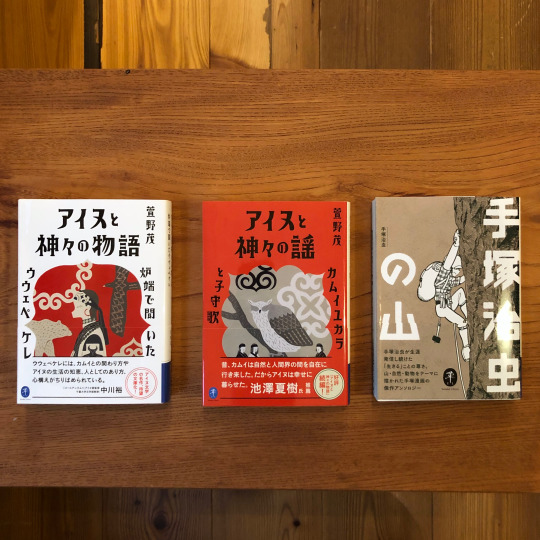
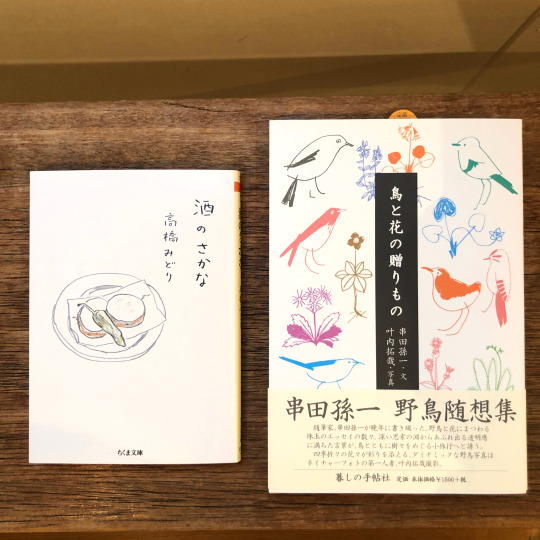
【新・再入荷】
「おとうふ2ちょう」くろだかおる 絵:たけがみたえ ポプラ社
「ふーってして」松田奈那子 KADOKAWA
「とらのことらこ」きくちちき 小学館
「ペロのおしごと」樋勝朋巳 小学館
「 ねこは るすばん」町田尚子 ほるぷ出版
「ぎったんこ ばったんこ」柚木沙弥郎 福音館書店
「内なる町から来た話」ショーン・タン 河出書房新社
「空の絵本」長田弘 絵:荒井良二 講談社
「アイヌのむかしばなし ひまなこなべ」 萱野茂 絵:どいかや あすなろ書房
「きょうはそらにまるいつき」荒井良二 偕成社
「いしころ」 森宏詞 絵:京田信太良 写真:平光紀雄 文研出版
ヤマケイ文庫
「アイヌと神々の物語」「アイヌと神々の謡」萱野茂
「手塚治虫の山」手塚治虫
「酒のさかな」高橋みどり ちくま文庫
「鳥と花の贈りもの」串田孫一 写真:叶内 拓哉 暮しの手帖社
0 notes
Link
オリンピックが開催されようが、誰かから旅行を命令されようが、「関係なく」、『アイヌと神々の物語』 萱野茂 を持って、家人と3泊4日山荘に籠ります。
夢屋は、例によって、23日から26日まで、閉まります。
0 notes
Photo

表演經歷
電影/劇集 Movie/TV Series
第 55 屆金馬最佳動畫長片 幸福路上|莊貝蒂
52 赫茲我愛你|20 行固定唱跳演員
轉彎之後|香港來台觀光客
模仿犯|電視台工作人員
想見你|上海同事
下一步,AI。NEXT,愛|媽媽
短片 Short
交大校園鑫馬獎微電影 茫茫|女主角
政大傳播學院學生短片 邊緣|女主角
政大傳播學院學生短片 誰在我背後|女主角
雲科大數媒系 112 級畢業製作 HideOut|女孩(英語配音)
台藝大電影系 107 級畢業影展 茂哥|裴雯店長
資策會 泰南古拳APP|Shirly
Felli Premium Tite|Michelle
第 14 屆公視學生劇展 無塵之地|麻將賭客
台藝大 107 級人生劇展 伊甸園的右眼|雅芳
輔大影傳第 22 屆畢業製作 美娟|小萱、語音(配音)
世新劇情MV 原諒我不明白你的悲傷|媽媽
世新廣電二三聯展 Survive! 活下去|阿飛妻子
劇場 Theater
政大傳播學院三系聯合畢展 原創打擊樂舞台劇 疾屋出租|二房東
政大戲劇社 期末公演 或許我該這麼說|天使
主持 Anchor
2017臺北世大運英語空氣品質氣象預報|英語主播
智慧財產資訊檢索暨應用推廣國際研討會|英語司儀
智慧財產訴訟案例分析及訴訟技巧國際研討會|英語司儀
專利落實:亞洲與歐美經驗的比較國際研討會|英語司儀
聲演經歷
有聲書 Audiobook
時報出版 金閣寺|有為子、鞠子、母親...等眾女角 🎧︎
時報出版 馴羊記|朗讀 🎧︎
時報出版 小王子|朗讀 🎧︎
春山出版 我所告訴你關於那座山的一切|朗讀 🎧︎
小康軒繪本館 壞壞大野狼|主述
紀錄片 Documentary
新北市文化基金會 海的這一端|旁白 🎬
雲林國際偶戲節 小人物大故事-讓掌聲蔓延,讓故事繼續|旁白
國家鐵道博物館籌備處 故事.北廠|旁白
文化部 再會了,臨港線的高雄機廠|旁白
文化部 高廠雄師|旁白 🎧︎
客家產業博覽會 東部旅客故事|旁白 🎧︎
戲劇 Drama
動畫 傑森一家:摔角大作戰|茱蒂傑森
動畫 叢林英雄團|波翠娜
動畫 鬼靈精|艾達姑姑
動畫 瑪麗亞凱莉之你是我最想要的聖誕禮物|葛蕾絲
動畫 電影版妖怪手錶:閻魔大王與五個故事喵!|夏美
動畫 歡樂好聲音|蓓琪
動畫 歡樂好聲音2|珊咪
卡通 神奇拍檔|凱特·米庫奇
卡通 小騎士大冒險|辛西亞公主
布袋戲 仙界小霹靂|發發精靈
電影 零號小隊|柏兒
電影 朵拉與失落的黃金城|珊咪媽媽
電影 托爾金傳|幼年希拉瑞、幼年克里斯多福、瑪莉
電影 闇黑之心|珊姆
電影 死侍2|凡妮莎、雪緒
電影 從前有個死侍|凡妮莎、雪緒
電影 大娛樂家|海倫·巴納姆、幼年夏麗蒂
影集 美國女孩的故事 - 1976年 艾葳與茱莉:幸福平衡|艾葳
影集 阿莫吉本的怪奇日常|凱蒂、潔西卡
其他 Other
動畫 兒福聯盟 創傷知情照護|主述 🎬
宣導片 行政院 性別平等觀測站|祝櫻台 🎧︎
宣傳片 經濟部 Taiwan Innotech Expo 2021 創新領航館|英語主述 🎬
微電影 信誼基金會 我們想搭一座橋|媽媽 🎧︎
旅遊節目 日本米澤八湯會 征服西吾妻山~挑戰成為米澤八湯達人|旁白 🎧︎
虛擬實境 臺大影像與視覺實驗室 虛擬體感 ReLaXing|主述 🎧︎
社群媒體 城邦媒體集團 設計家、蛙家|主述
應用程式 資策會 行動地陪APP|舞者、媽媽、遊客
線上課程 衛生福利部食品藥物管理署 醫藥教育研究試驗計畫|主述
遊戲 數碼寶貝|光子郎、嘉兒、角龍獸、獨角馬獸、妖女獸、超海龍獸
遊戲 北涼悍刀行|姜泥、青鳥、舒羞、裴南葦、洛陽
動畫 文化部 高雄機廠修車流程動畫版|主述
國小教材 康軒文教|課本、習作、動畫錄音
電話客服語音 放肆玩股份有限公司|錄音
電話客服語音 施耐德電機股份有限公司|錄音
0 notes
Photo

『女神降臨』寫真書正式發行囉! 美尻女神「Via 潘維亞」狂野奔放肢體曲線❤️ 《個人封面》只在👇官網可購買到喔! IG頁面設有連結🔗 http://tianhe.com.tw/portal_c1_cnt_page.php?owner_num=c1_416440&button_num=c1&folder_id=64431&cnt_id=760813&chbib_buy_look= ———���———————————————— 實體/網路通路即將於本週可訂購 ·博客來書局、金石堂、全家便利商店 以上訂購預計12月20日出貨 ———————————————————— 攝影/洪逸民 動態攝影/王俊棋Achi 化妝/Katrina 造型/Hark 髮型/Kiki 總編輯/陳昱州 發行人/劉偉億 出版人/陳昱州 通路總監/張哲嘉 專案總監/郭達源 資深美編/曹馨云 宣傳/李思慧 印刷/茂棠有限公司 模特兒/ 又又 黃鈺文 Via 潘維亞 陸上美人魚哈霓萱 Kattie凱蒂兒 Angel 安紀 Michelle 雪兒 ———————————————————— 場地贊助/欣藍舍blue villa 發行/星呈廣告有限公司 出版/天禾傳媒娛樂有限公司 台北市復興南路一段一號14樓 電話/(02)2773-6118 傳真/(02)2773-6228 網址/www.tianhe.com.tw E-mail/[email protected] ———————————————————— 書籍訂購 網址/www.tianhe.com.tw 客服/(02)2773-6118 戶名/天禾傳媒娛樂有限公司 帳號/822中國信託153540033138長安分行 法律顧問/証毅法律事務所 電話/(02)2773-6228 地址/台北市復興南路一段一號14樓 https://www.instagram.com/p/B5j1tgqnS93/?igshid=1ms0o742g9eks
0 notes
Text
【萱萱萱炫美食】Gonna 共樂遊 食.旅.生活︱雄獅新品牌 舒肥料理.大空間.不限時.寵物友善.WIFI.插座
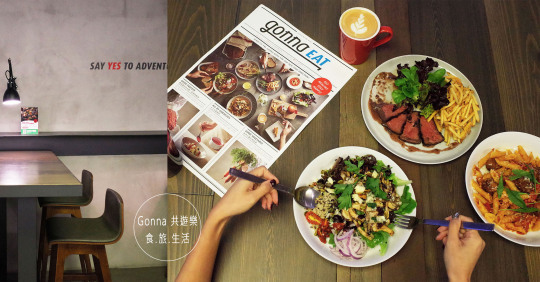
******* 【Gonna 共樂遊 食.旅.生活】
地址:台北市內湖區石潭路145號 電話:02-87939663
營業時間: 週一-週四 8:00-18:00 (供餐至15:00, 飲料甜點至17:00) 週五 8:00-21:30 (供餐/飲料/甜點至20:30) 週六-週日 9:00-21:30 (供餐/飲料/甜點至20:30)
FB:Gonna 共樂遊 食.旅.生活 其他:不限時、WIFI、插座、無服務費、寵物友善 *******
內湖這一帶也算是早午餐爭霸之地,每每到內湖都深感這裡的步調比台北市中心再慢一些
大樓密度低,土地相對遼闊舒適
雖然只跨過一條基隆河,落差也著實明顯
我喜歡休假時特地到內湖用餐,抽離在台北市中心的快節奏感
Gonna 共樂遊 是雄獅集團的新品牌
顧名思義是一個結合飲食,旅行與生活的複合空間
一樓 gonnaEAT ,提供地中海風輕料理,從輕食、甜點到正餐應有盡有
二樓 gonnaREAD 是旅行閱讀咖啡館,提供精品咖啡與閱讀空間
(gonnaREAD 在11月初~12月中進行內部整修,詳細營業資訊請關注Gonna共樂遊粉絲頁動態)
雄獅集團是旅遊業的龍頭,這次拓展到餐飲業可以說是將旅行中"好好過生活"的概念融入日常生活
不只是一間餐廳,更是一個可以透過飲食、閱讀、活動開啟更多美好旅程的空間
目的是帶著大家去遊覽生活中未發掘的樂趣
@萱萱萱炫美食 粉絲團貼文,獨家送餐券活動(即日起~11/30)
快點進去拿餐券吧!!!
gonnaEAT的空間很大,周圍停車也方便,周末常有許多家庭客人帶著小朋友一起來用餐
因為不限時間,待起來沒有壓力,我正是喜歡它的空間感和到處都是插座的規劃
可以帶著電腦來坐一下午,或是跟朋友喝下午茶大聊特聊
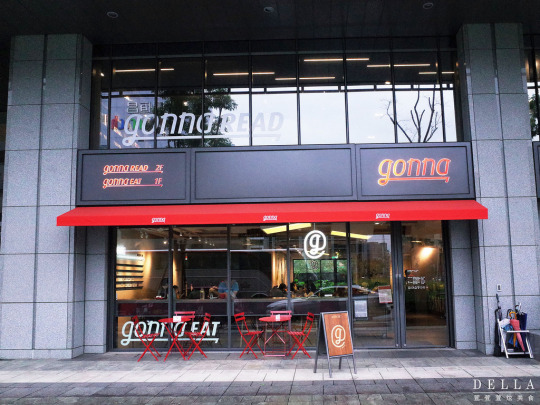
店內座位規劃很大氣,何謂大氣?
就是座位與座位間的距離 超 級 大
(加上又不限時間,好像不用賺錢一樣??!!)
每組客人都能完整地擁有屬於自己的獨立空間
這樣的設計概念來自歐洲的市集廣場,大家可以在這自在的空間裡恣意交流、相聚談論
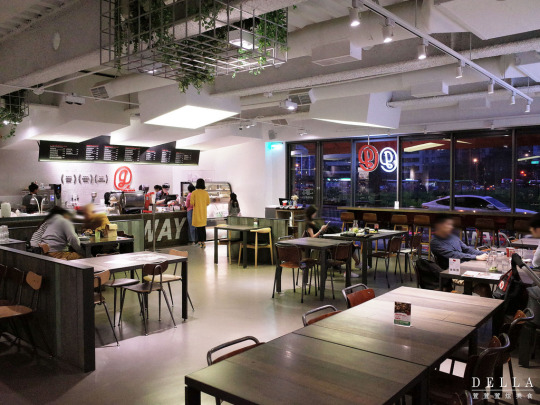
不收服務費,採自助模式點餐,如同歐美的「Fresh Casual」
從點餐、加水、拿餐具都自己來,還可以透過開放式廚房,看到食物製作的過程
新鮮、衛生看得見,也具有高度自主性
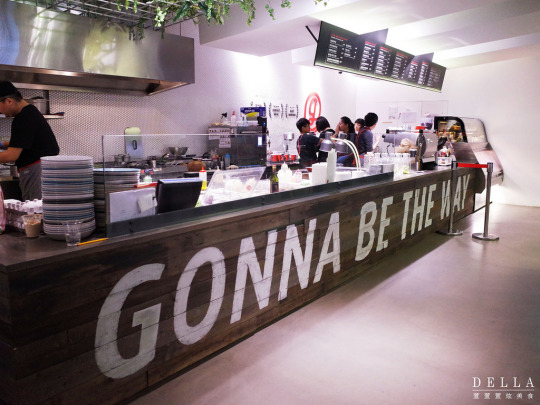
除了一般的餐桌座位,也有極具設計感的高腳椅座位區
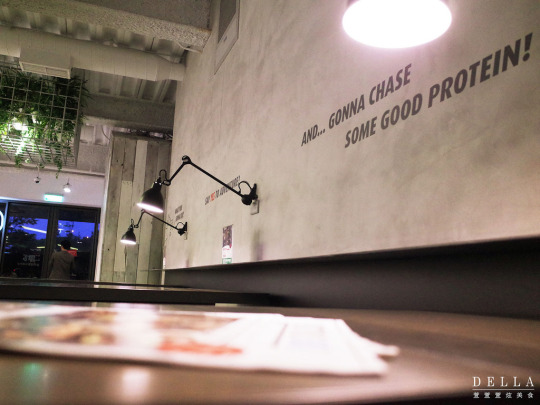

所謂的網美牆(?)
簡單大方不失設計感
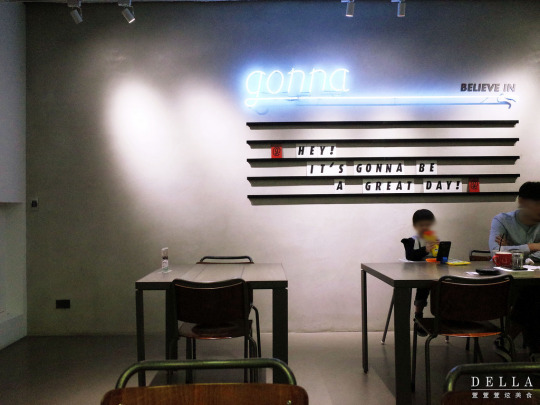

這個小包廂為包場空間,基本消費為$3500
可以容納10位左右,不限時間,可說是非常親民
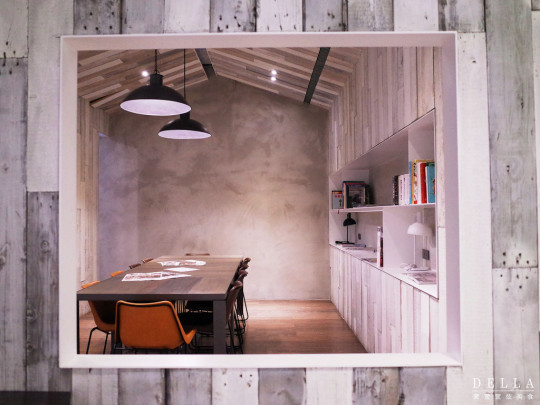
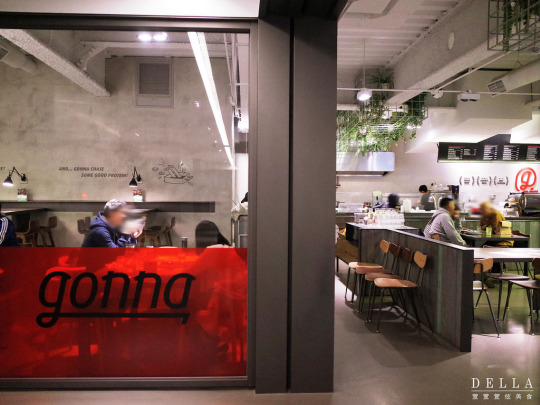
來講講餐點吧!
gonna菜單的設計概念如同雜誌,圖文並茂,能夠清楚明瞭地了解餐點的模樣
上頭還有特別註明gonna的十大經典推薦菜色!!
像是,72小時茴香烤活菌豬、舒肥烤prime級翼板牛排、舒肥雞肉炙烤凱薩沙拉、巴斯克風味半熟蛋佐酸種麵包……等等
(詳細菜單在文末)
(因為gonna的菜單還在持續調整,文中的餐點售價是以當天消費體驗的來列,實際仍以店家告示的餐點價格為主。)
強調「廚藝主導、簡單美味」
與一般餐廳很不相同,gonna清楚地告訴大家菜色的原料和食譜
因為他們注重健康與食物原味!
挑選當季蔬果、原生穀物、在地好肉做為食材
並自己熬製醬料和高湯、不使用人工調味料,就為呈現兼顧健康和營養均衡的美味
gonna的品牌創建核心理念:
「好肉好菜 Good Protein, Good Produce 」
「自由自在 Feel Free 」
「實惠價格 Daily affordable price」

今天放風日的營養餐點:
舒肥烤prime級翼板牛排、野菇酒醋藜麥沙拉、西班牙辣香腸烤椒麵
胡蘿蔔蛋糕、100%天然鮮蔬果汁、烤榛果拿鐵

【餐點優惠組合】
凡點早午餐、碗沙拉、義大利麵、帕里尼、漢堡、舒肥烤肉任一系列,皆可享以下一項優惠:
(1) $40 加購黑咖啡或茶或今日湯
(2) $60 加購卡布奇諾或拿鐵
(3) $70 加購鮮果汁
100%天然鮮蔬果汁【紫-甜菜藍莓】 $100
這杯蔬果汁是用加購價點的
gonna的蔬果汁是他們的招牌,放眼望去幾乎每桌一杯
因為他們推出的天然蔬果汁是100%純果汁,不加冰塊也不加糖!
絕對是忙碌外食的現代人,必喝的營養聖品
蔬果汁有紫色、橘色、黃色、綠色四種選擇
分別由不同蔬果製成,當然對於身體的好處也不相同
我今天挑選的是紫色,裏頭有有滿滿的甜菜根、一顆多的蘋果、藍莓和檸檬
喝起來清爽又舒服,我很喜歡!

【烤榛果拿鐵】 $105
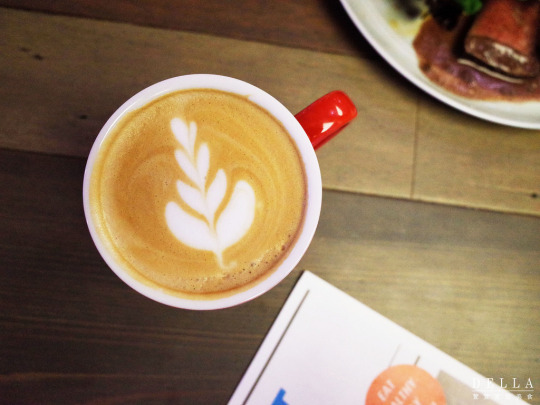
【野菇酒醋藜麥沙拉(五辛素)】$220
裏頭有大量菇類_ 波特菇、鮑魚菇、袖珍菇、小香菇
還有葉菜、風乾番茄、蔓越莓乾、藜麥、帕瑪森乳酪、焦糖核桃
味覺上以陳年紅酒醋和藍乳酪調味,加上一點芝麻葉,那香氣好到無法挑剔
其實這樣的沙拉組合是好吃保證,但卻不常見,雖然食材很簡單,但關鍵是在於食材的新鮮!
用料也給得很實在,尤其加了大量俗稱穀物紅寶石的藜麥
是我這一年一直推崇的穀類食物,可以取代白米等澱粉,是低GI的食物,同時也對身體有眾多好處
當然成本可是很高的!
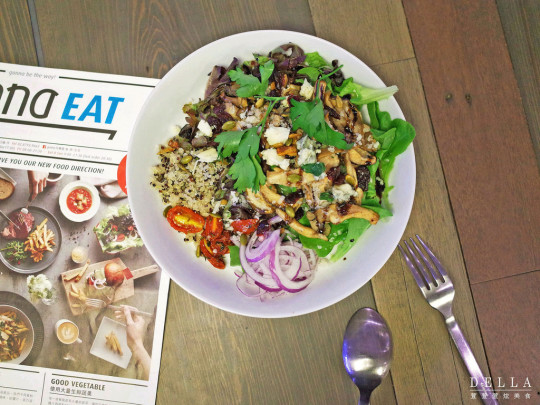

調味上,這道沙拉絕對在水準之上
紅酒醋加上blue cheese的組合很有sense,建議blue cheese的愛好者絕對不可以錯過
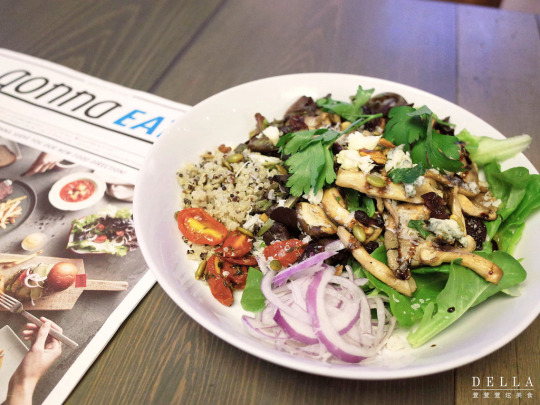
【舒肥烤自然牛(Prime級翼板牛排)】$350/120g(4oz)、$550/240g(8oz)
這幾年餐飲界一直提到舒肥料理,它是一種低溫、長時間且溫和的烹煮方式
為的是保留食物本身的原味,沒有高溫去破壞肉類中的蛋白質,反而是將肉汁與營養完整保留與呈現
我點的是小份的4oz
使用Prime等級的美國安格斯自然飼養牛肉,先濕式熟成兩天
再經過24小時低溫舒肥烹調,接著再以260度高溫烤到外表酥脆
這樣的製作方式可以鎖住牛肉本身的鮮甜,進而藉由烘烤烤出酥香的表皮
嚼起來十分柔軟,這種原汁原味的口味是其他烹調方式做不出來的,好嫩呀~~
一旁搭配波特酒��汁與薯條、生菜
吃完這盤幾乎已經飽了

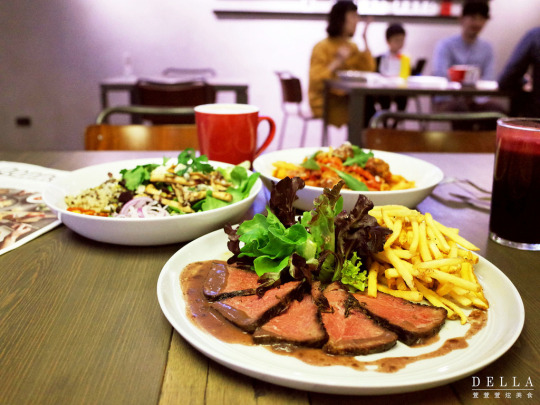
鮮嫩粉紅牛

【西班牙辣香腸烤椒麵】 $250
看起來很像肉丸但其實是自製的西班牙香腸
先將香腸煎到焦糖化再加入大蒜、辛香料等調味
香腸算是重口味,有辛香料呈現出的辣度
筆管麵由辣味番茄醬汁、白酒和初榨橄欖油調味,分量同樣不手軟
加上上頭的帕馬森乳酪,適合在混沌下午想用重口味衝擊一下味蕾的人
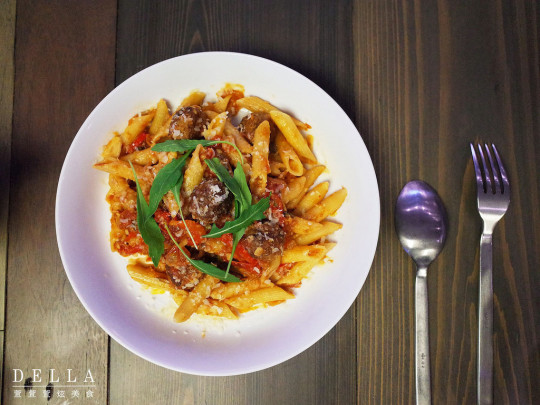

【胡蘿蔔蛋糕】$90
胡蘿蔔蛋糕在美國其實是經典甜點,但在台灣卻很難一見
這是我近期吃到很喜歡的蛋糕!
夠特別、夠滿足
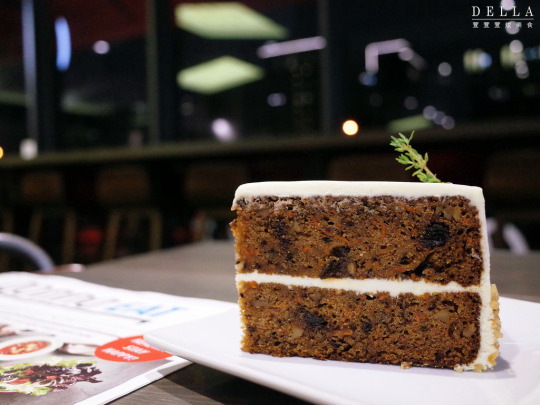

選自優質T55麵粉製作,裏頭有胡蘿蔔、鳳梨、葡萄乾、胡桃
主要味覺由肉桂香氣帶出,接著是咀嚼時竄出的核桃香和葡萄乾香氣
蛋糕體厚又札實,同時含有足夠水分而不會感到乾口
外頭裹著奶油乳酪糖霜,不過甜,卻令人感到十足幸福!(眼冒愛心)
敢吃肉桂甜點的人,很建議要嚐嚐這道!

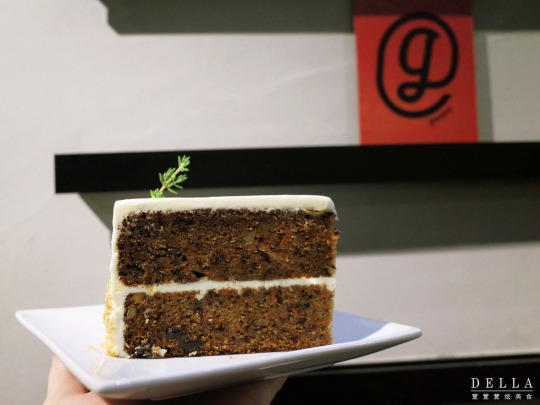
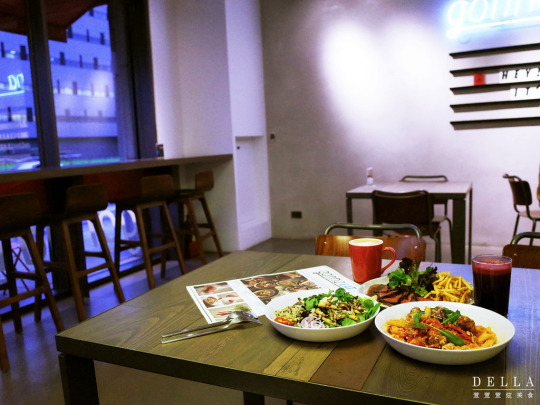
在gonna玩耍了一下午,最後由沒得挑剔的胡蘿蔔蛋糕畫下今天美好的句點
用餐時旁邊那桌帶著小朋友,見店員特地送上塑膠餐具
這舉動看在眼裡真貼心
大集團餐廳和小店的特色不同,這種寬敞空間的舒適感是大餐廳才有辦法提供的
因為實在太不划算啦!餐點價位不高,座位不密集,又不限時間
下回想到二樓的gonnaREAD坐坐,店員說二樓賣的是精品咖啡
同時可以在裡面閱讀,是個自己一人也適合待著的空間
有時候生活忙碌慣了,與朋友的聯繫會逐漸稀少,甚至淡忘了同樂的感覺
gonna提供這樣的一個空間
就是要你和朋友們盡情相聚在此,喝杯咖啡,吃塊甜點,盡情享受生命的每一個時刻

BTW, 這是天花板的裝置藝術,十分有趣!

【店內活動】
加入gonna的@LINE好友圈,參加「集點換美味」活動
享滿300元集1點,滿5點即贈「gonna百元餐券」
(活動至2017/12/31止)
Facebook:Gonna共樂遊 食‧旅‧生活 Line@:@gonna
——————– 【菜單】 ———————-
(以下提供當天消費的菜單,因為gonna的菜單還在持續調整,實際可以點的餐點內容及餐點資訊以店家提供的為主。)

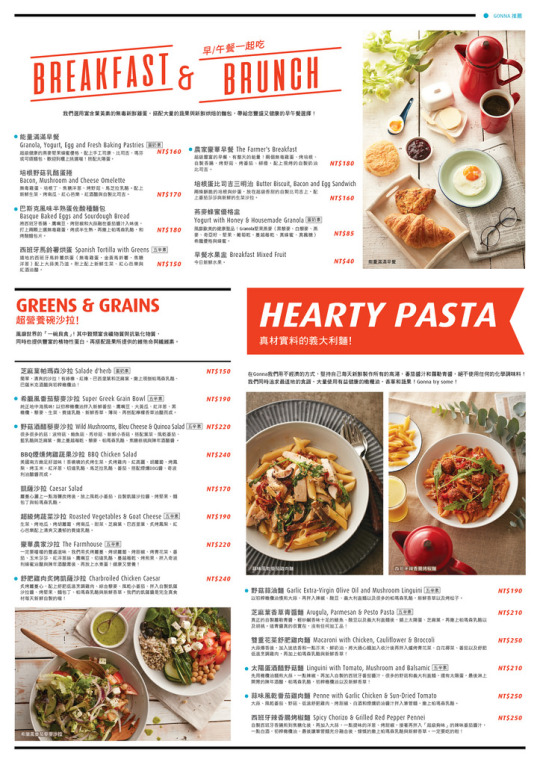
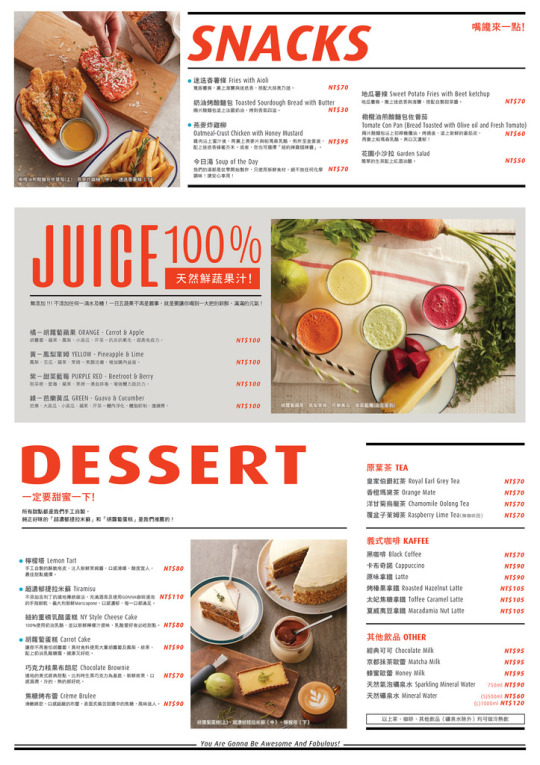



1 note
·
View note
Photo

【本棚登録】『アイヌのむかしばなし ひまなこなべ』萱野 茂 https://t.co/iNXp1uFK17 #booklog
0 notes
Photo

【本棚登録】『アイヌのむかしばなし ひまなこなべ』萱野 茂 https://t.co/iNXp1uFK17 #booklog
0 notes